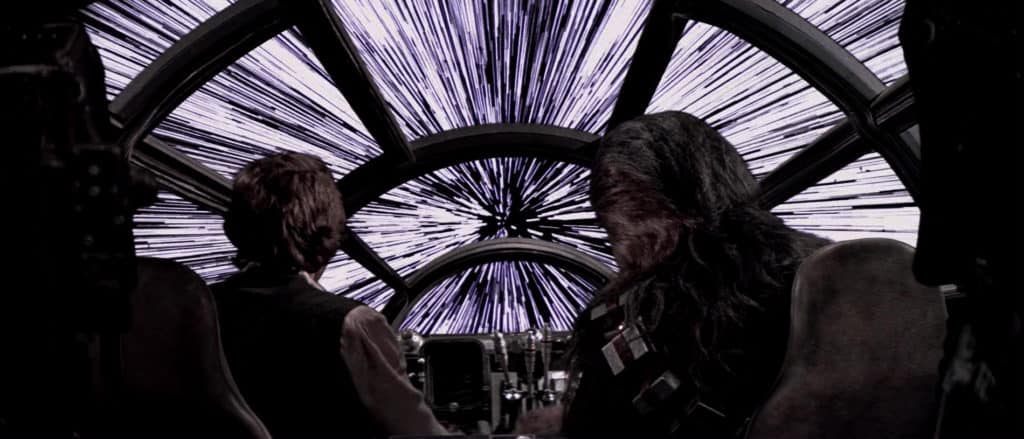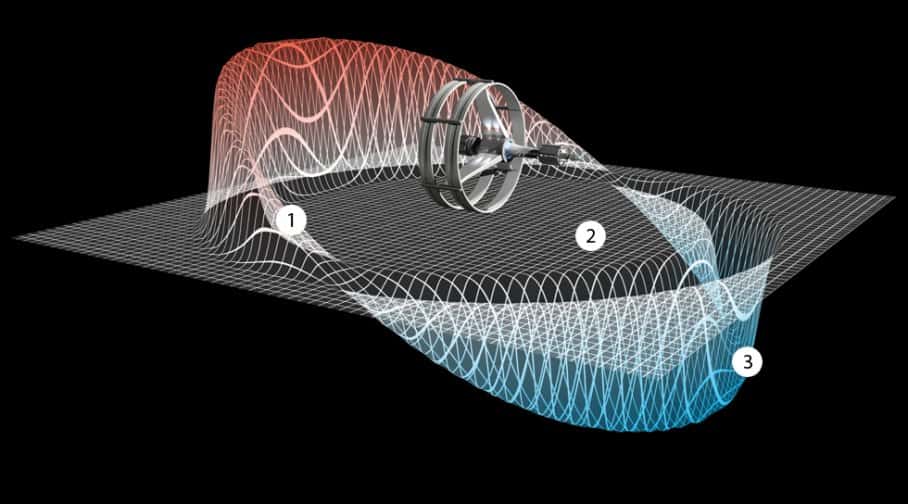No Joke, You Can Build A Warp Drive

Space is a really big place, even our own cosmic neighborhood is huge; with current technology, it takes 2 years to get to Mars. If you want to visit the closest star (besides the sun) and you have a spaceship that can go light speed (well, 99.9% of light speed), it’s still going to take you a little over 4 years. So, if you want to zip around the galaxy to explore alien worlds we need to do better, we need a warp drive!
Before we get started there are a couple things you need to know. First, space and the galaxy are HUGE. How huge? It takes light 100,000 years to cross the galaxy, huge. Second, the speed of light is the cosmic speed limit, Einstein proved this, you absolutely cannot move through space faster than light, full stop. You can’t even get to light speed as moving any amount of mass would, literally, require infinite energy. If you can’t go faster than light, and it takes light 100,000 years to cross the galaxy, we seemed pretty doomed to never be able to explore much beyond our solar system, unless you get creative.

Miguel Alcubierre
The warp drive has long been a Hollywood plot device to solve this problem, it’s a “thank god we invented the X device!” tool to get around the laws of physics. We can thank Hollywood for this because it’s what inspired a Mexican physicist, Miguel Alcubierre, to solve the problem of interstellar travel. While he was watching Star Trek, captain Kirk was talking about the Enterprise’s warp drive (it was probably broken again, because, Star Trek) and this gave Alcubierre his eureka moment. “Yeah, WARP drive! Warp it. That could work!” While creative, his idea was pretty simple: fine, you can’t move through space faster than light, but what if you warp space? What if you warp space so that for your spaceship, the nearest star isn’t 4.2 lightyears away (remember, a lightyear is the distance light travels in 1 year) but only 1 mile away? If you can do that, interstellar travel becomes trivial. If you don’t believe me that you can warp the fabric of spacetime read the next section about how you’ve been lied to about gravity, if you do, skip ahead to the how it works section.
You’ve been lied to about gravity
While warping the fabric of spacetime may seem like we’re replacing one piece of science fiction for another, we aren’t. We already know that it happens, it happens everywhere. The most common one is gravity. You probably learned that gravity is this force that pulls objects closer, it’s what keeps the Moon in orbit. You probably learned that the Moon and Earth have the same relationship as you would with a ball on a string that you spin around your head, with the string being gravity. While thinking about gravity like this is the easiest way to explain it, it’s actually a lie. That’s not how gravity works.
Here’s how gravity actually works. All objects (you, me, Earth, the Sun, and so on) warp spacetime, just by existing, you create an indent in the fabric of spacetime. The bigger the object, the bigger the indent. For objects like planets, that indent is big. If the Moon could think, it would think, “I’m moving in a straight line” and the Moon would not be wrong! From it’s perspective, it IS moving in a straight line. The problem is, it’s next to Earth which has warped spacetime enough that the Moon’s “straight line” takes it in circles around the Earth. Check out the image and video below if you want a visualization of this. But in short, warping space is totally doable!

How it works
You build a spaceship that creates a bubble around it (the bubble isn’t actually made of anything, it’s a bubble of warped spacetime). The ship contracts space in front of it, so that a metre long measuring stick would be infinitesimally small. At the same time, it expands space behind it. This would cause the ship to “fall” forwards and you could get anywhere in the blink of an eye.

The blue area below the plane represents contracted space while red and raised area represent expanded space
If Alcubierre wasn’t being creative enough for you already, it get’s better. He took Einstein’s field equations (which he needed to solve this puzzle) and then solved them BACKWARDS. As far as mathematics is concerned, that doesn’t break any rules. Some physicists question whether doing that is valid, but no one is overtly saying you can’t.
But you do need one thing, exotic materials. And by exotic materials, I mean negative matter. As in, this football sized blob of negative matter weighs a negative 5kgs. Have fun wrapping your head around that one. It’s not too hard to see how matter with this sort of trait would mess with the fabric of spacetime. Now, with some crafty engineering, you can get away with only needing a couple kilograms of this stuff. Once you’ve got it, you can use it to make yourself a nice little warp bubble and warp spacetime! And that’s basically it; negative matter is really good at warping spacetime, so make a bubble with the stuff and tell Chewie to “punch it!”
The downsides
1) We don’t have any negative matter (yet): Mathematics is the great predictor of physics. Mathematicians are often years ahead of physicists, telling them “Hey, the math says this should work, you should check it out”. Then about a century later, physicists come out and say “You guys were right, it does work!” And mathematics says that negative matter (along with other exotic materials) does exist. We just haven’t found any yet. On the bright side, physicists have already started making small amounts of other types of exotic matter in CERN’s particle accelerator. Small here means subatomic levels small.
2) This would allow you travel backward in time: Another problem is, by essentially beating light to a destination, you could travel backward in time (that’s a whole other article), and Steven Hawking, really, really doesn’t like the idea of time travel. Don’t let that get you down though, he wouldn’t be the first genius to be wrong. After creating his theory of General Relativity, Einstein worked on some new ideas for the last bit of his life, and that work was debunked!
3) You might get cooked: There’s also a chance that Hawking radiation (named by and after Steven Hawking) would fry everything inside of the bubble. Kinda like putting some poor soul inside of a microwave, yikes! The jury is still out on that one though.
4) Planet destroying shotgun blasts: Space is incredibly empty, but if you go far enough, you’ll be bumping into a bunch of tiny particles. It’s not sure if the particles would travel along the bubble and get left behind or build up on the leading edge of the bubble. If they build up, then when you stopped they would be released with a ton of energy. Depending on how far you went, we’re talking about a shotgun blast that could go from destroying planets to destroying solar systems. Your mate in Alpha Centauri isn’t going to be happy when you roll up to his BBQ and blow up his planet!
In any case, none of these problems have stopped NASA from doing serious research on the Alcubierre drive. So, clearly, some very smart people think that this could work!

You might like these!



